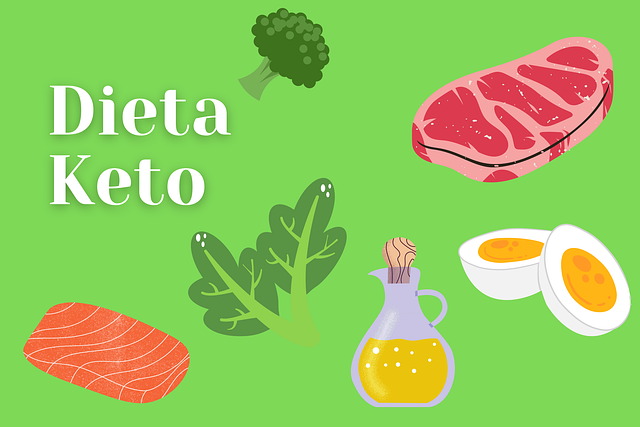The ketogenic diet is a stringent nutritional regimen that consists of minimal carbohydrate intake, high fat intake, and sufficient protein intake. When carbohydrate intake is decreased and the body’s glucose reserve is depleted, the body’s metabolism shifts towards ketogenesis, which is characterized predominantly by the oxidation of fatty acids in the liver. The ketenes created as a result of this process serve as a significant alternate energy source to glucose in the body.
If left untreated, this ketosis can progress to overt ketoacidosis, resulting in a decline in pH and serum bicarbonate levels, which can result in significant sickness and hospitalization. In addition to type I diabetes and alcoholism, malnutrition should not be neglected as a probable cause of ketoacidosis, particularly in those that are on low-carbohydrate and/or low-calorie diets.
The ketogenic diet, in addition to ketoacidosis, may cause electrolyte imbalances, hypoglycemia, severe pancreatitis, and dyslipidemia, among other things. Fat metabolism, which occurs predominantly in liver hepatocytes, results in the synthesis of two ketone bodies, namely beta-hydroxybutyrate and acetoacetate, which serve as energy-producing substrates. When present in large concentrations, beta-hydroxybutyrate and acetoacetate, which are acid anions, can cause a fall in blood pH (acidemia), which is harmful.
However, if the caloric intake is too low or if periodic fasting is practised, there is a risk of entering ketosis more quickly and developing clinically significant ketoacidosis, which manifests as symptoms such as exhaustion, nausea, vomiting, and confusion.
Ketosis and the ketogenic diet
Low-carbohydrate diets, such as ketosis, are extremely popular for weight loss. It normally takes 3 or 4 days of eating fewer than 50 grammes of carbohydrates per day for healthy persons who do not have diabetes or are not pregnant for ketosis to kick in. In addition, fasting can be used to kick start the ketosis process. It is referred to as a ketogenic or “keto” diet when it has a high proportion of fat and protein.
Symptoms of ketosis and ketoacidosis?
Having terrible breath while in ketosis is not uncommon. A consequence of the breakdown of ketone for use as a fuel source is the release of acetone, which is expelled from the body through urine and exhaled by the body. The aroma may be fruity, but it is not in a pleasant way. In contrast, ketoacidosis manifests itself as the following symptoms:
• Thirst to the extreme
• Dehydration
• Nausea
• Vomiting
• Bloating and distention of the stomach
• Tiredness
• Breathlessness is a common symptom.
• A sense of bewilderment.
The symptoms of DKA might also be the first clue that you have diabetes, so be on the lookout. In one study of hospital admissions for DKA conducted by Trusted Source, 27 percent of those treated for the disease were later diagnosed with diabetes.
Causes of ketoacidosis
DKA is primarily caused by inadequate diabetes management. A DKA episode can occur in persons who have diabetes if they skip one or more insulin doses or if they do not use the appropriate amount of insulin. Additionally, many medications and illnesses can impair your body’s ability to adequately utilize insulin. DKA is a condition that can result from this situation. Examples of common DKA triggers include pneumonia and urinary tract infections. In addition, the following factors may be present:
• Stress
• In addition, people who abuse alcohol should be avoided
• People with a history of excessive alcohol usage who fast and become malnourished
• The use of illicit substances, particularly cocaine
• A number of pharmaceuticals
Risk factors for ketosis
A low-carbohydrate diet is associated with an increased risk of ketosis in some individuals. As a weight-loss technique, for example, this could be beneficial. People who follow a restrictive diet or who have an eating disorder may be at greater risk of developing ketosis than the general population.
Risk factors for ketoacidosis
DKA is most commonly associated with type 1 diabetes. It is important to follow your doctor’s blood sugar management regimen if you have diabetes because it is a major risk factor for DKA. Diabetic children and teenagers were the focus of the study. They discovered that one in every four subjects had DKA at the time of their doctor’s initial diagnosis. Among the other potential dangers are the following:
• Being afflicted by alcoholism
• Failing to eat at prescribed times
• Eating insufficiently
In a ketogenic diet, how can you avoid ketoacidosis?
Following the doctor’s care plan when it comes to insulin consuming a well-balanced and nutritious diet.
What happens when ketosis turns into ketoacidosis?
When ketone levels are ten times higher than they are in nutritional ketosis, DKA occurs. If left untreated, extremely high amounts of ketone cause the blood to become acidic, causing fatigue, dizziness, nausea, excessive thirst, dyspnea, and eventually coma and death.
How can one become ketoacidosis?
When your body lacks enough insulin to let blood sugar into your cells for energy.
Is it possible to fall into ketoacidosis without having diabetes?
Ketoacidosis (non-diabetic ketoacidosis) is an uncommon illness that can be brought on by hunger. When the body is deprived of glucose, it goes into ketosis, resulting in metabolic acidosis. Ketoacidosis can be triggered by a low-carbohydrate diet on rare occasions, according to the literature.
What are ketoacidosis’ long-term consequences?
These individuals report with polyuria, polydipsia, nausea or vomiting, widespread abdominal pain, and hyperventilation upon admission to the hospital. DKA can cause cerebral oedema (which is more likely in children with DKA), coma, or death if not treated.
How often does ketoacidosis lead to death?
DKA has the potential to be lethal in the worst-case scenario. Mortality, on the other hand, is closely linked to precipitating causes. According to Umpierrez, mortality is less than 1% in those who are newly diagnosed with diabetes or who have stopped taking insulin and developed ketoacidosis. To get DKA treated, you need go to the hospital. There, you’ll get emergency therapies like insulin via IV to lower your ketone.

